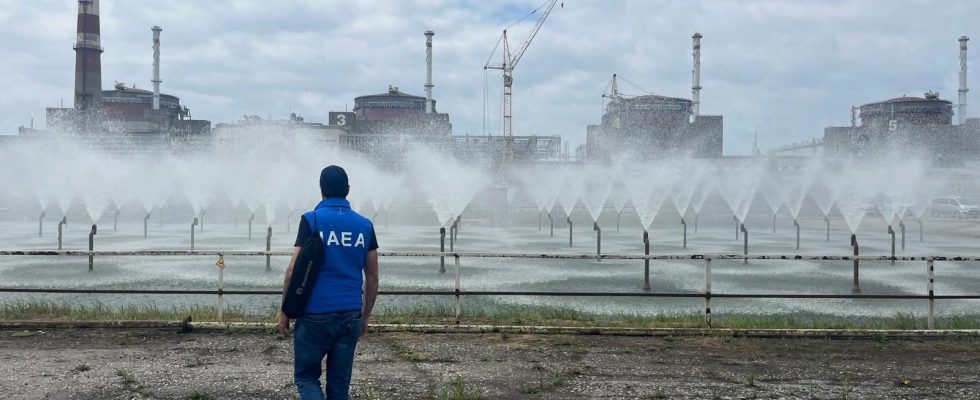The head of the International Atomic Energy Agency (IAEA) issues a warning. According to Rafael Grossi, dangers are increasing around Ukrainian nuclear power plants due to the proximity of fighting and power cuts. “There are a lot of dangers which are multiplying and which are there until the end of the conflict”, declared this Wednesday, November 29, the director general of the IAEA, to the press, on the sidelines of a visit to the site planned for the burial of radioactive waste in Bure (Meuse), in eastern France.
The Zaporizhia nuclear power plant in southern Ukraine remains in Russian hands since the country’s invasion in early 2022. “Military actions have increased, and in our permanent expert mission, which we have to Zaporizhia and also in other Ukrainian power plants, we see an increase in attacks around the power plants, noted Rafael Grossi. “It concerns us greatly.”
The head of the IAEA also mentioned power cuts, “which poses a risk for the cooling function” of the reactors. In this context, the IAEA is trying “to have a deterrent effect on everyone to prevent the misery of this war from being added to an accident with radiological consequences”, he explained. Falling into the hands of the Russian army on March 4, 2022, Zaporizhia, the largest power station in Europe, was targeted by fire and was cut off from the electricity network on several occasions, a precarious situation which raises fears of a major nuclear accident .
Mutual accusations
Both camps accuse each other of wanting to cause a catastrophe there. Russia claimed in early November to have intercepted nine Ukrainian drones flying near the power plant. Earlier, Moscow had already accused Ukraine of using drones to target a nuclear power plant in the Russian border region of Kursk, hitting an administrative building and a nuclear waste repository. The plant operator, however, indicated that the attack had not caused an increase in radioactivity.
For its part, Kiev had accused Moscow at the beginning of July of preparing a “provocation” in Zaporizhia, the army affirming that “objects similar to explosive devices had been placed” on the roofs of reactors 3 and 4. The IAEA then assured to have observed “no mines or explosives” on the roofs of these buildings.
Rafael Grossi made his third visit to the Ukrainian center last June in Zaporizhia since the Russian invasion. On this occasion, he had to assess the risk for the installation of the rupture of a dam, the retained waters of which were used to cool the reactors. He considered the situation “serious” but at the same time said he was reassured by the fact that “measures are being taken to stabilize the situation”. The IAEA always has a team of experts on site.
On the electricity supply side, the Ukrainian nuclear operator, Energoatom, assured in August that the power plants located in the territories controlled by Kiev would be at full capacity before winter. In addition to Russian-controlled Zaporizhia, Ukraine currently has three power plants – nine reactors in total.
